5 Helpful Sketchbook Painting Tips
January 17, 2024
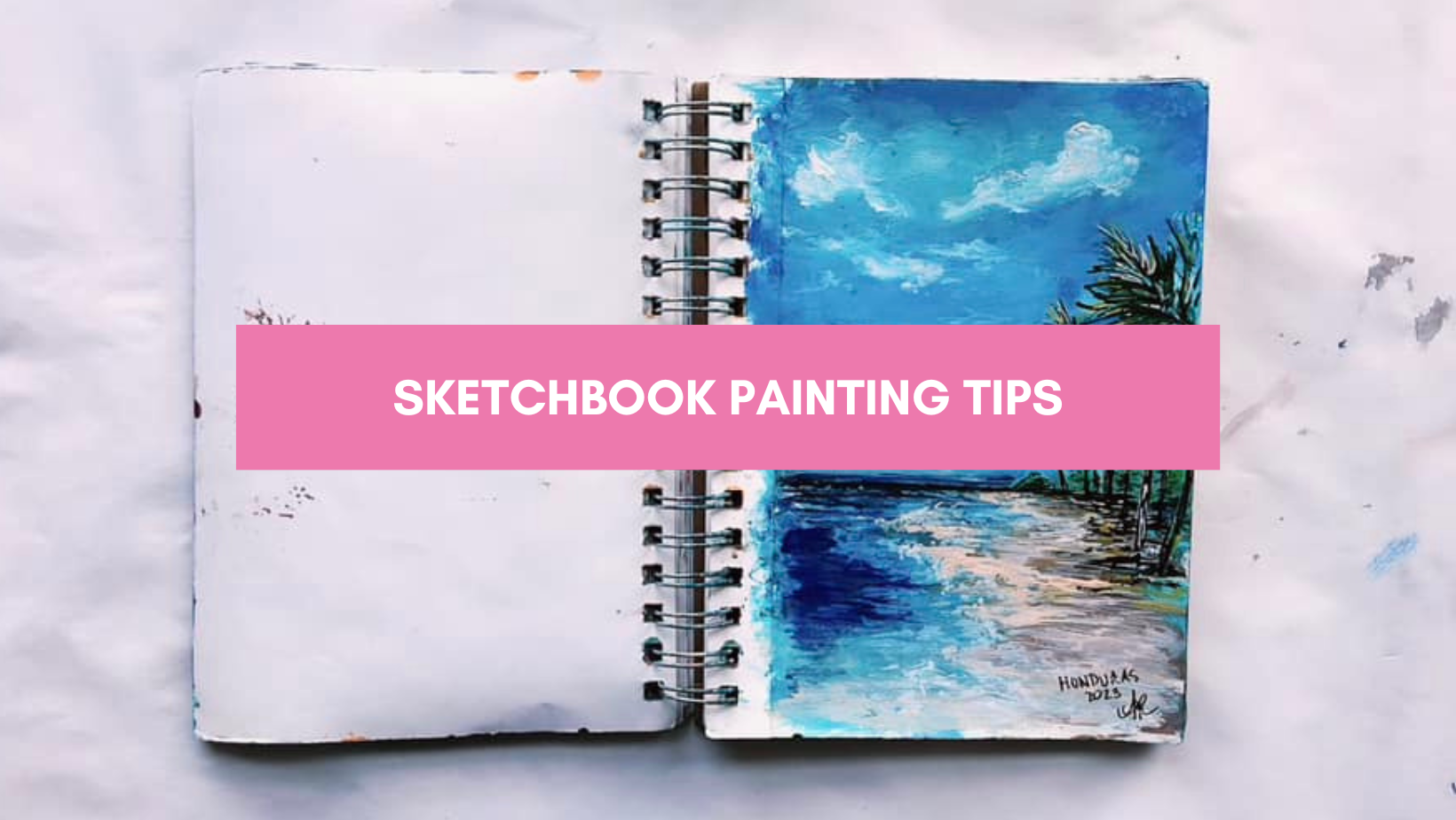
Hello my artsy friends! Today, I want to share some of my top sketchbook painting tips (and really.. painting with acrylics in general!) Anytime I’m teaching an online paint class, I find myself saying most of these tips over and over. So keep reading, jot down some notes, and reference this guide next time you go to crack open your sketchbook and start a new masterpiece. 🙂
PS – if you’re looking to join me in starting and finishing a brand-new sketchbook, check out my newest paint challenge! Each page I paint, I’ll be teaching you, step by step, how i painted it!
[sketchbook challenge details: Your Artsy Friend Sketchbook Challenge ]
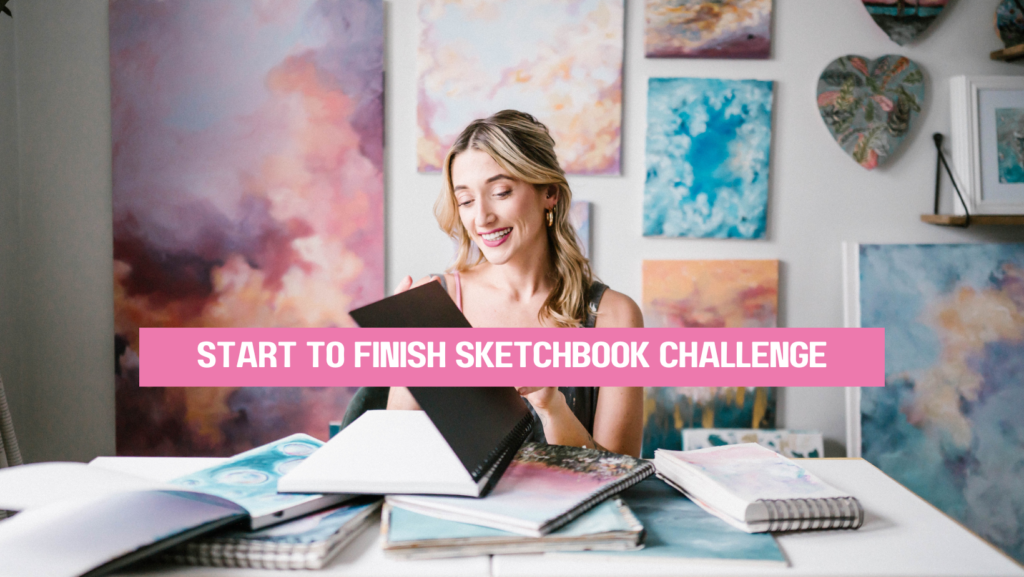
Alright let’s get into it! Here’s my go-to sketchbook painting tips!
1. Sketchbook Painting Tip #1 – Protect your pages from unnecessary paint
This might seem like a simple tip, but I can’t tell you how many time’s i’ve neglected to protect the pages in my sketchbook. This would result in pages being stuck together and unwanted paint colors on other pages. I personally like to place a larger piece of watercolor paper behind the page I’m working on, as it’s thick and durable enough for my chaotic painting. PLUS, a little bonus from this – you might even end up with some really cool designs & abstract art! One of my top sellers was actually created by doing this! [see below]
[check out some of my other original paintings!]
arastasia.com is a participant in the Amazon Services LLC Associates Program, an affiliate advertising program designed to provide a means for sites to earn advertising fees by advertising and linking to amazon.com
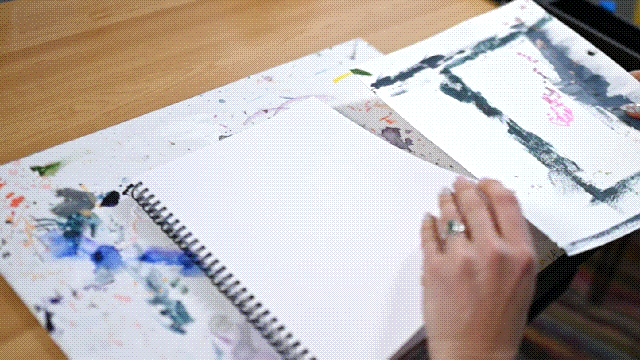
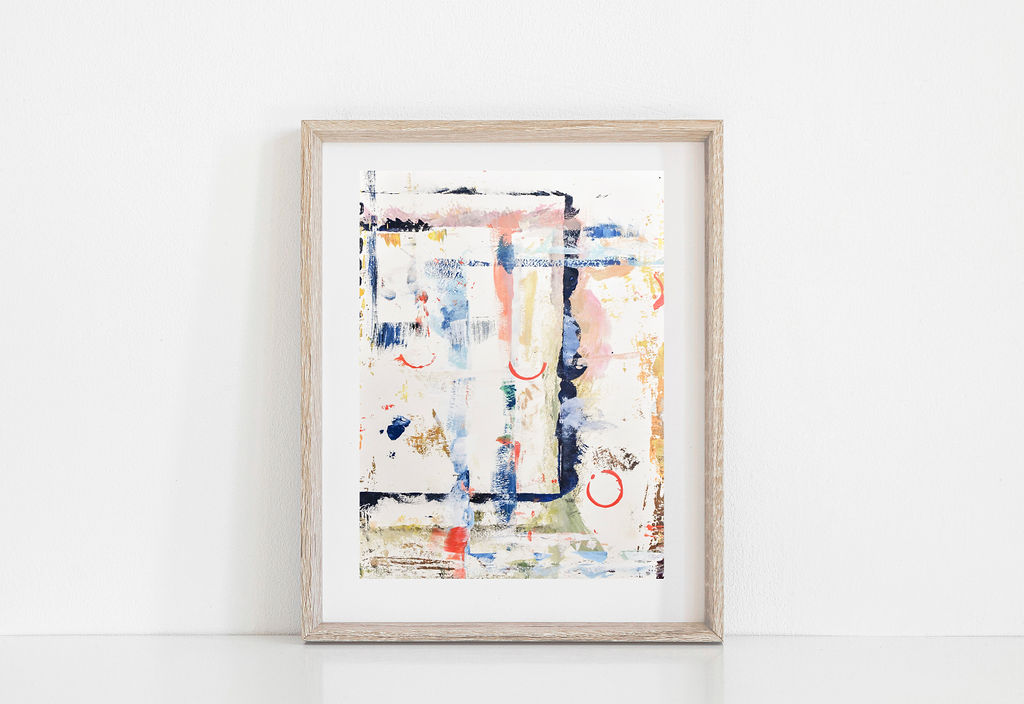
2. Tip #2 – Less is More! (and more cost effective!)
One of my absolute golden rules: don’t drown your sketchbook in paint – begin with smaller amounts & remember, you can always add more paint (but taking it away is a whole different story & much harder.) Oversaturating your page not only limits the potential for captivating layers and textures but also makes blending colors, especially for backgrounds like sky, water, or gradients, a challenging task. Plus, it’s a sneaky way to waste your supplies, & i hateeee seeing my supplies wasted!

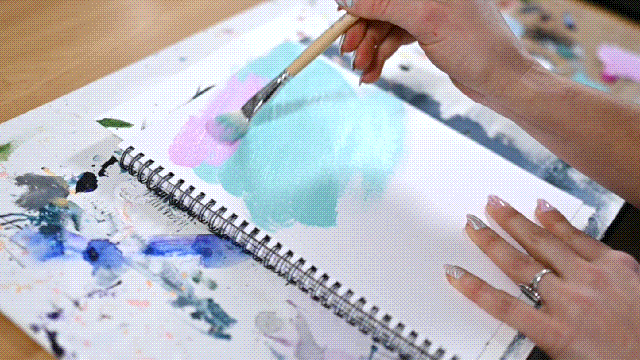
Sketchbook Painting Tip #3: Use Water To Blend Paints
If you’re striving for a more seamless transition, I recommend using a little bit of water to help blend your colors (especially if your paint is starting to dry.) This technique is especially helpful if you’re painting a gradient background, transitioning sky, & water landscapes! Simply dampen your paintbrush (with your desired pre-existing paint color already on it!) & be sure to tap off the excess water to avoid drips or over saturation.


Tip #4: Use Water for Painting Smaller Lines & Details
When your idea or design calls for intriciate details or fine lines, you can use water to make your paint-brush thinner & more precise!
Do the following:
- dip your brush into water
- tap it into a little bit of paint
- then twist and swirl your brush on your paint pallet or protector paper.
Doing this will help you achieve those smaller lines that will really elevate your details! I personally use this technique all the time when painting my wildflowers, palm trees, & flower designs in general.

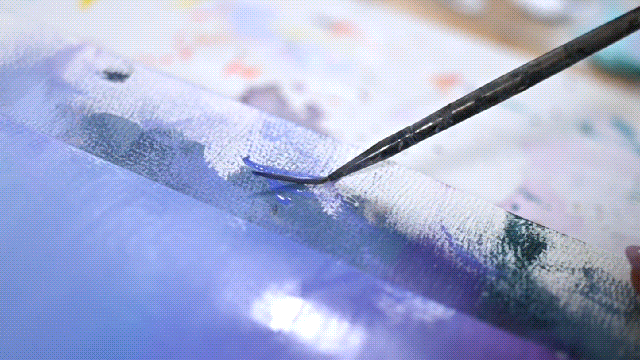

[check out my online wildflower painting class if you’d like to learn my process!]
Sketchbook Painting Tip #5: Utilize Your Leftover Paint
If you find yourself with a plate full of extra paint, don’t waste it and let it dry out!! Instead, use it to create a base-color background on future pages in your sketchbook. This not only minimizes waste but also serves as a catalyst for creativity. Sometimes, all it takes is a splash of color on a blank page to ignite inspiration and get the ball rolling! (especially when you’re stuck in “blank page paralysis”) It’s a simple yet effective way to keep the creative juices flowing.

Okie Doke, my creative pals, the next time you open your sketchbook, remember these tips. Start small, blend with finesse, protect your pages, and embrace the magic of leftover paint. Let your sketchbook be a playground of imagination, and remember – art isn’t mean to be perfect, and perfect doesn’t exist!
Stay shining, & stay creating 🎨✨
Sincerely, your artsy friend that is rooting for you,


Arastasia Rolain – Traveling Mural Artist, Art Educator, & Creative Entrepreneur